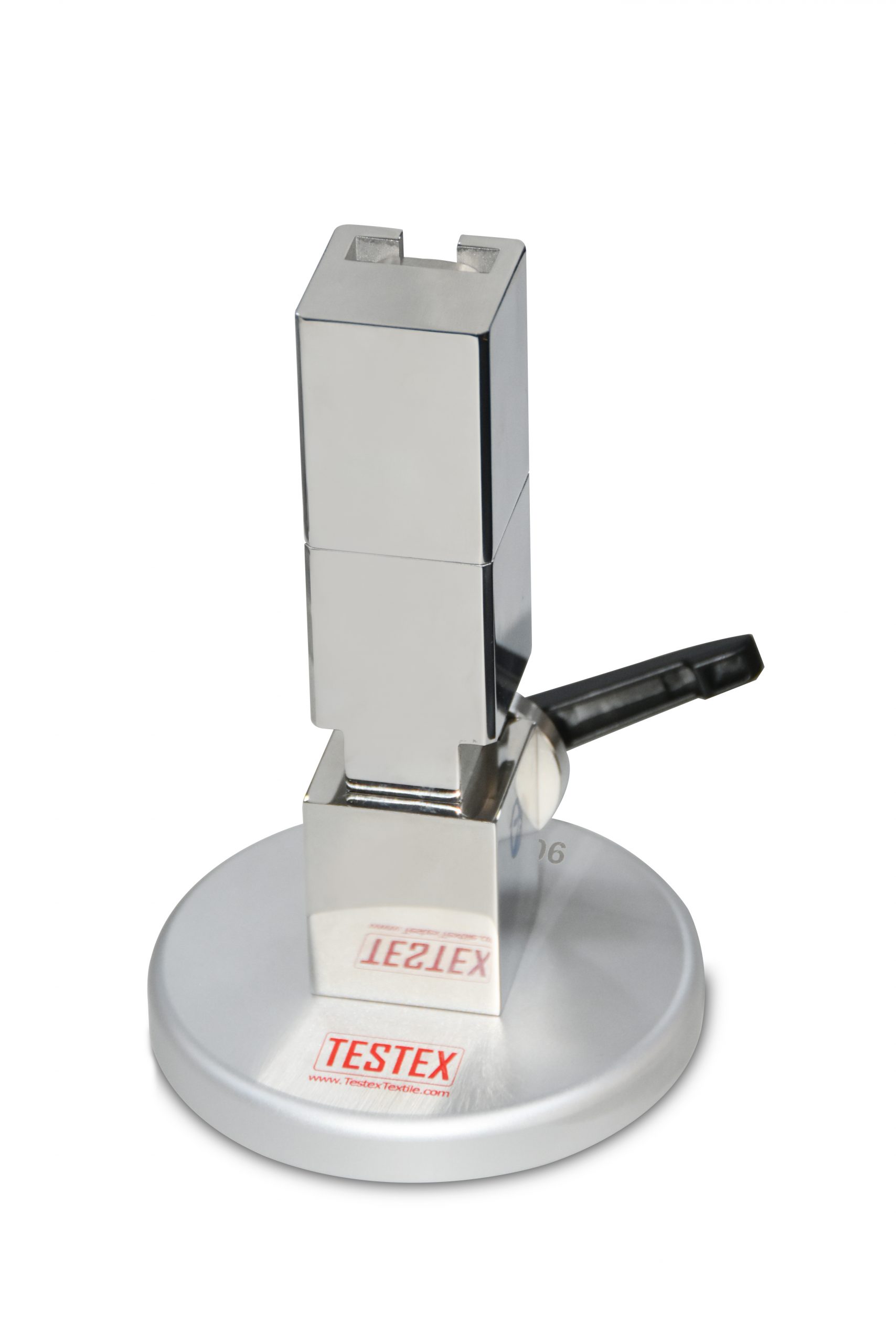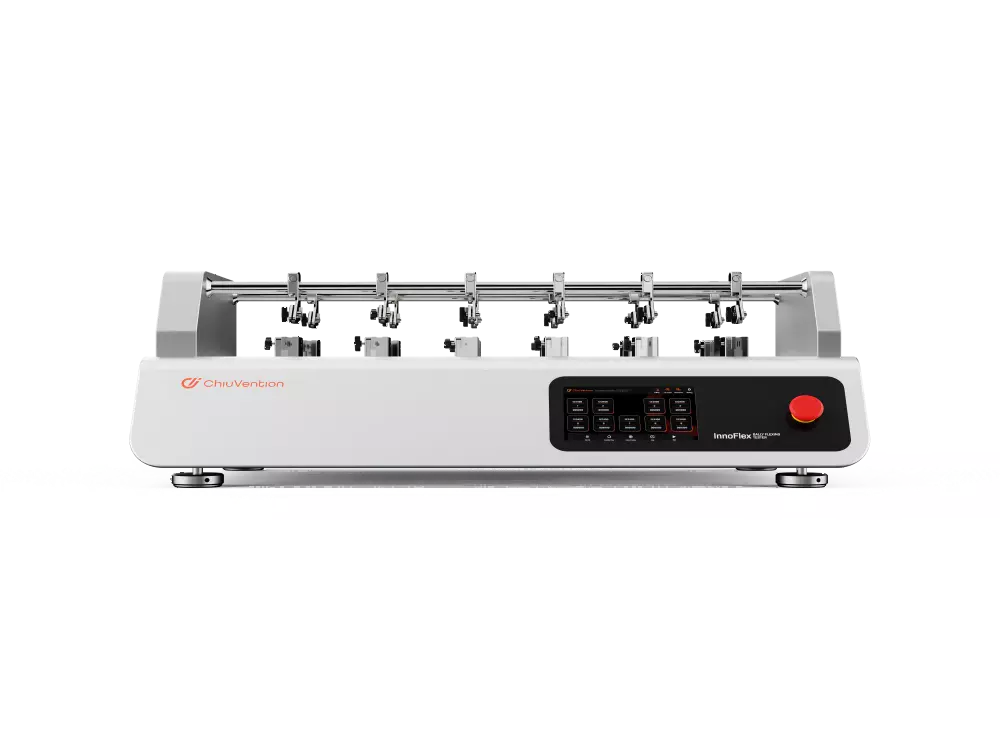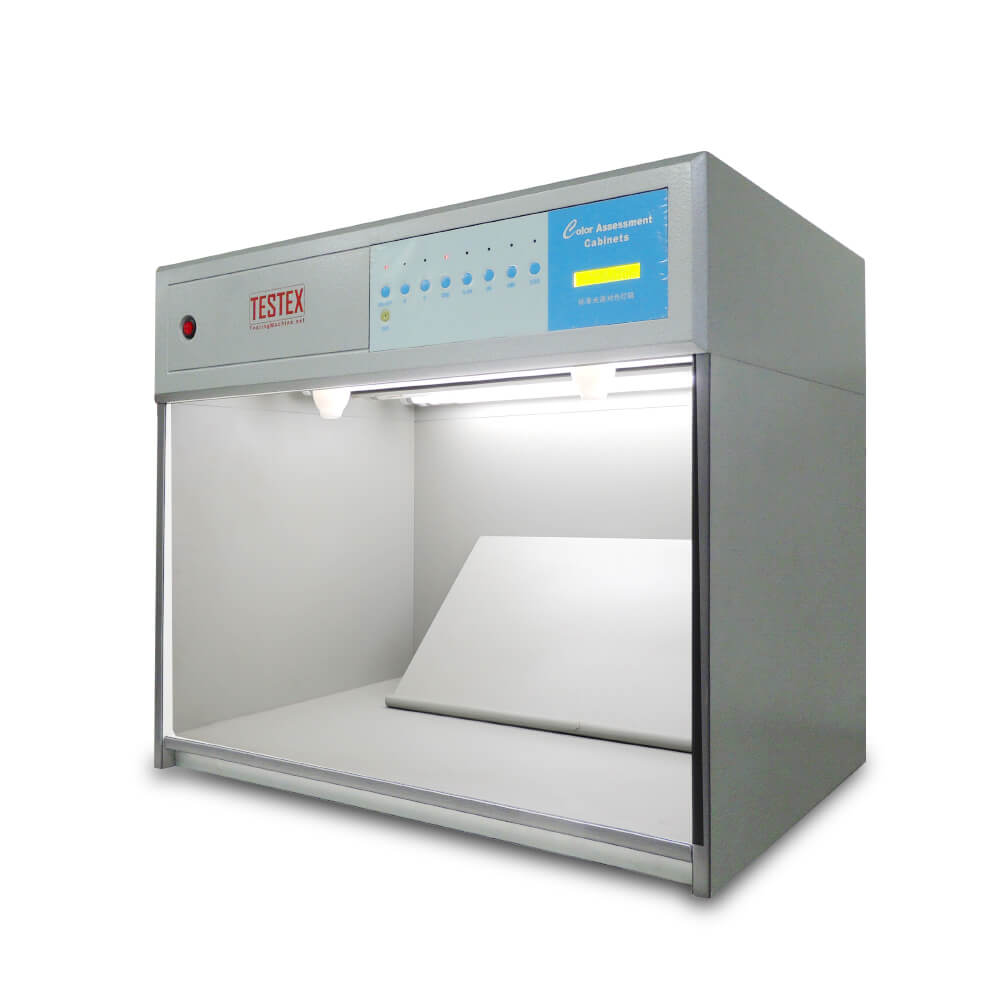Martindale Abrasion and Pilling Tester | A smart instrument developed by the sister company ChiuVention.
Martindale Abrasion and Pilling Tester, or Martindale Tester, determines the abrasion and pilling resistance of all kinds of textile structures. Samples are rubbed against abrasives at low pressures and in continuously changing directions. The amount of abrasion or pilling is compared against standard parameters. That is called the Martindale Rub Test.
The Fabric Abrasion Tester is also used to conduct the abrasion performance of medical protective clothing to ensure durability when used in medical scenarios. Get our top-quality Pilling Tester at an unbeatable Martindale Abrasion Tester Price. Reach out to us for a special deal that will surprise you!
Description
Application of Martindale Abrasion and Pilling Tester
The Smartindale Martindale abrasion machine tests fabrics for abrasion and pilling. It tests knits, wool, and fake and real leather under pressure. It’s used in industries like textiles, footwear, and garments.
Features of Martindale Abrasion and Pilling Tester
The Lissajous curve is calibration-free, making it a more reliable test.
The Smartindale Martindale Abrasion Tester utilizes a patented digital algorithm that powers dual servo motors and precision slide rails, replacing the traditional mechanical analog drive. This advanced system is designed to create a flawless Lissajous curve, enhancing the accuracy of the tests. It has undergone rigorous testing, successfully completing over 10 million cycles—equivalent to three years of continuous use. During these tests, rubber samples and double weights were employed, which only adds to its credibility. Importantly, despite the demanding testing conditions, the Pilling Tester consistently maintains an accurate and perfect Lissajous curve. As a result, this makes the Smartindale Martindale Abrasion Tester a more reliable choice for assessing the abrasion resistance of fabrics.
The Martindale Abrasion Tester can connect to ERP or LIMS through a smart APP.
The Martindale Abrasion Tester is designed for seamless connectivity with ERP or LIMS systems via a smart app. The Smartindale Fabric Pilling Tester connects effortlessly to the SmarTexLab app on your smartphone, allowing you to set parameters, monitor tests in real-time, and access a variety of features directly from your device. Once testing is complete, you can easily upload the results to your ERP or LIMS, streamlining the smart testing process. This integration supports compliance with laboratory management system requirements, including ISO 17025, CNAS, and ILAC. Overall, this innovative solution makes the entire testing process more convenient, transparent, and efficient.
One-touch switching between abrasion and pilling testing, for greater efficiency.
You can easily switch the test modes on the control panel, like changing from abrasion to pilling. And, there’s no need to remove the cover plate or adjust the pin position. This makes it simple and convenient for you!
User-friendly design
You can easily lift the guide plate of the Martindale Tester with one hand. This feature makes it simple to load and take samples. When the cover plate falls, it gently cushions the impact. This not only protects the machine but also enhances safety for operators who using it.
Customer Feedback of Martindale Pilling Tester Machine
“I purchased this Martindale Tester through ChiuVention’s agent-ATI Corp., who has more than 20 years of experience in textile testing instrument marketing and service in the U.S., and they can support me very timely. This Martindale Abrasion Tester does well both in testing accuracy and functional design (such as switching test mode from the screen and friendly details for testers, etc.).”
“We knew about this Martindale Tester at ChiuVention’s French agent. It is very stable and has a unique design. Its features are on par with top brands of test instruments. And It has a very reasonable price. So, without a doubt, it became our final choice.”
Specifications of Martindale Tester
Abrasion test
- Max stroke of movement 60.5+/-0.5mm
- Weight of holder and spindle 198+/-2g
Pilling test
- Max stroke of movement 24+/-0.5mm
- Weight of holder and spindle 155+/-1g
Accessories of Martindale Abrasion Tester
| Fuse tube 2 pcs
Foam wool 9 pcs Φ38 mm |
|
| Wool felt 18 pcs Φ90 mm,Φ140 mm | |
| Wool abrasive 9 pcs Φ140 mm | |
| Sampling plate 3 pcs Φ38 mm,Φ90 mm,Φ140 mm | |
| Sampler 1 pc for pilling test | |
| Sampler 1 pc for abrasion test | |
| Press 1 pc Φ126mm,2.5kg | |
| Fixture1 9 sets for pilling test | |
| Fixture 2 9 sets for abrasion test | |
| Weight 1 9 sets 12Kpa | |
| Weight 2 9 sets 9Kpa | |
| Rubber ring 9pcs | |
| Test pen 1pc | |
| Connection shaft 9pcs for pilling test | |
| Connection shaft 9pcs for abrasion test | |
| Stainless steel ring 9pcs 260g | |
Optional Accessories of Martindale Pilling TesterEMPA990 rating chart card 1 set knitted + Woven |
|
| SM50 rating chart card | 1 set IWS + ASTM |
| SM25 abrasion-resistant wool cloth | 1 pack 1.6 X 5m/pack |
| Sm26 woven wool felt | 1 box 24 pcs/box Φ140 mm |
| Sm26 woven wool felt | 1 box 24 pcs/box Φ90 mm |
| SM28 polyurethane ether foam | 1box 250 X 200mm/pc, 25pcs/box |
Power 220V/110V 50/60Hz
Weight 90 kg
Dimension 510*850*300 mm (W*L*H)
Standards of Martindale Fabric Abrasion Tester
ISO 12945-2-2020 ISO12947-1-1998 ISO12947-2-2016
ISO12947-3-1998 ISO12947-4-1998
GB/T 21196.1-2007 GB/T 21196.2-2007
GB/T 21196.3-2007 GB/T 21196.4-2007
GB/T 4802.2-2008 BS EN 530-2010
ASTM D4970/4970M-22 ASTM D4966-22
Optional Standards of Smartindale Martindale Abrasion & Pilling Tester
BS EN 388-2016+A1-2018 Protective gloves for mechanical hazards;
SATRATM31 A/B Abrasion Resistance Test for Leather;
PUMA; BS EN 16094-2012 Laminated wood flooring, Test method for the determination of micro-scratches;
ISO 20344-2021 Item 6.12 Personal protective equipment, Test methods for footwear and boots;
BS EN 13520-2002 Test methods for footwear, uppers, linings and insoles, abrasion resistance;
ISO 5470-2-2021 Rubber or plastic-coated fabrics, determination of abrasion resistance
Welcome to TESTEX, a supplier of professional textile testing instruments. The Martindale Abrasion & Pilling Tester is on sale. Contact us to get a detailed price quote. We have a lot of Martindale abrasion test standards information. You can contact us to get it for free.
Here is Martindale’s pilling test iso 12945-2:2020.
Martindale Test Meaning
The Martindale Test is an established procedure used to evaluate the abrasion resistance of textiles, helping manufacturers determine the durability of their products. This test employs specialized Martindale Test Equipment, which includes the Martindale Tester, designed to simulate the wear fabrics experience in everyday use. By following the specified Martindale Abrasion Test Standards, the test measures how well fabrics can withstand friction and wear over time. The Martindale method involves rubbing a fabric sample against a standard abrasive surface under controlled conditions, generating consistent results that reflect the fabric’s performance. The Martindale Abrasion Tester facilitates this process, providing reliable data essential for quality control in the textile industry.
Martindale Abrasion and Pilling Tester Working Principle
The Martindale Abrasion tester works by rubbing a circular specimen against an abrasive. The abrasive is a standard fabric. This happens under a defined load in a planar motion. The motion forms a Lissajous pattern. Combining two trajectories creates the Lissajous curve. They come from vibrations along perpendicular directions. You can also get Martindale abrasion tester procedure. Martindale Abrasion Tester for Sale Now, please contact us to get your favorable pricing.
24 reviews for Martindale Abrasion and Pilling Tester | A smart instrument developed by the sister company ChiuVention.
You must be logged in to post a review.
Martindale Abrasion & Pilling Resistance Test Method
Reference method:
- ISO
ISO 12945-2: Test method for pilling resistance of fabrics: Martindale Method
ISO 12947: Test method for abrasion resistance of fabrics: Martindale Method
- ASTM
ASTM D4966: Test method for abrasion resistance of fabrics: Martindale Abrasion Tester
ASTM D4970: Test method for abrasion resistance of fabrics: Martindale Method
- GB
GB/T 4802-2: Test method for pilling resistance of fabrics
GB/T 21196: Test method for abrasion resistance of fabrics: Martindale Method (Martindale Abrasion Tester, Determination of Test Piece Breakage, Determination of Quality Loss, Determination of Appearance changes)
GB/T13775: Test method for abrasion resistance of cotton, linen and spun silk
- EN
EN ISO 12947: Test method for abrasion resistance of fabrics: Martindale Method
- BS
BS ISO 12947: Test method for abrasion resistance of fabrics: Martindale Method
Martindale abrasion tester working principle:
Test piece of fabric is placed in the specimen clamp, and it will be rubbed against with abradant in a Lissajous figure. According to the requirement, once the test piece is broken, test piece should be taken down to calculate its abrasion resistance index, or evaluate its rating of pilling through the visual description of abrasion.
Technical specification:
- Number of working position: 4, 6, 9
- Counting display: 0-999999 times
- Holder Moving distance: 60.5±0.5mm, 24±0.5mm
- Pressing substance mass:
Weight for garment sample: 595±2g
Weight for furniture decorator sample: 795±2g
- Effective fiction dia. of grinding blocks:
Type A: 198g (1.94N) pressure head (9KPa) ¢28.8-0.084mm
Type B: 155g (1.52N) pressure head (12 KPa) ¢90-0.1mm
- Relative motion speed of clamp and grinding table: 47.5±2.5 turns/min
- Weight for sample loading hammer: 2500±10g
Test apparatus:
- A copy of the product manual
- Type A pressure head and type B pressure head: 4/4 working positions, 6/6 working positions, 9/9 working positions
- Weight for furniture decorator sample of 795g and weight for garment sample of 595g: 4/4 working positions, 6/6 working positions, 9/9 working positions
- Standard felt: 4/4 working positions, 6/6 working positions, 9/9 working positions
- Leather collar: 4/4 working positions, 6/6 working positions, 9/9 working positions
- Weight for sample loading hammer of 2500g: 1
- Sample loader: 1
- Fuse: 2
- Steel ball: 6
- Drawing pen: 1
- Circular shear template of F40mm、F90mm、F140mm: one for each
- Other necessary accessories recommended by manufacturer
Test procedure:
- Test piece preparation
In the standard environment, we put the test piece in the tiled state for a period of time according to different standard. For example, 24h (GB/T 4802.2), 16h(EN ISO 12947-4).
- Test piece selection
The sample shall be cut from different parts of the whole fabric with representative. If it is a fancy fabric , the sample shall include all the different tissues and colors presented by the cloth.
- Taking down the additional loading weight and bearing axle.
- Taking down the top and clamp holder.
- Test placement
Loosening the retaining ring of test clamp, we should put the test piece into the test clamp base. If the test piece is smaller than 500g/m2, we need to put a foam between the test piece and the metal clamp. Oppositely, it is big enough, or it is compound fabric, we don’t need the foam. Each piece held in test clamp should get the same tension.
- Placement of wool felt and abradant
Putting the wool felt and abradant on the holder, and the weight for sample loading hammer on the abradant, and then tighten the nut in order to fasten the abradant on the holder by retaining rings.
- Pressing the abradant on the pressure head.
- Let the side of test clamp with test piece face down, and put it on the test clamp base. After that, the bearing axle should be adjusted until it aligns and inserts the circular groove of clamp.
- According to standard, we settle the number of times on the tester and turn on it. Won’t be stop itself until it achieves enough times in the measurement.
- Taking down the test piece and compare it with photographic standard.
Martindale vs Wyzenbeek conversion
[table id=912 /]
(The ratio of Martindale rating to Wyzenbeek rating is 3 to 4.)
For the standard pdf or more information, please contact us with comment, we will give you satisfactory reply.
[contact-form-7 id="16355" title="Inquiry"]
A: The Martindale abrasion test method evaluates abrasion resistance based on endpoint and appearance changes. In contrast, the TABER abrasion testing method records the number of cycles of friction as an indicator of abrasion resistance.
Q: How to Choose Between 4-Station, 6-Station, and 9-Station Martindale Pilling Testers?
A: 4-Station: Suitable for small to medium-sized laboratories or factories, typically used for routine testing and can handle a limited number of samples simultaneously.
6-Station: Suitable for medium-scale testing requirements, capable of accommodating multiple samples, ideal for situations where there is a need to increase the testing volume.
9-Station: Suitable for large-scale testing needs, such as in large production lines or quality control departments, requiring high-throughput testing and able to handle more samples at the same time.
Q: How to Evaluate the Quality of the Lissajous Curve in Martindale Pilling Resistance Testing?
A: In Martindale pilling testing, an ideal Lissajous curve should be symmetrical, closed, clear, and consistent across multiple tests. Such a curve indicates good abrasion resistance of the fabric and stable testing results. If the curve is asymmetrical, blurred, or inconsistent, it may indicate testing errors or equipment issues.
Q: What is a good pilling rating?
A: For everyday clothing, a Martindale score between 30,000 and 50,000 is generally considered to have good abrasion resistance.
For outdoor garments or industrial applications that require higher durability, scores may need to exceed 50,000.
Synthetic fibers (such as polyester and nylon) typically have higher Martindale scores than natural fibers (such as cotton and wool).
The performance of blended materials falls in between, depending on their composition and processing techniques.
Q: What are the Factors Affecting the Abrasion Resistance Testing of Fabrics?
A: Fiber Type: Different fiber materials (such as polyester, cotton, and nylon) have significant differences in abrasion resistance.
Fabric Structure: The density, weave pattern, and thickness of the fabric can affect its abrasion performance.
Finishing Processes: Treatments such as abrasion-resistant coatings can enhance abrasion resistance.
Testing Pressure and Abrasion Head Material: Different pressures and materials of the abrasion head can influence test results.
Humidity and Temperature: Environmental conditions can also affect the performance of abrasion resistance.
Q: What is the working principle of Martindale Abrasion Tester?
A: Two circular samples of the same material rub mutually in a certain pressure along Lissajous curves. Then after reaching stated circles, pilling of test sample should be measured. Martindale test uses figure 2 among four types of Lissajous-Figure.
Q: What are the Four Commonly Used Methods for Fabric Pilling Test, and What Fabrics and Equipment Do They Use?
A: Circular Track Method
Suitable Fabrics: Ideal for finer fabrics, such as knits and lightweight materials.
Equipment: Circular track pilling tester.
Features: The abrasion head moves in a circular track on the fabric surface, simulating mild friction pilling.
Martindale Method
Suitable Fabrics: Applicable to various types of fabrics, especially clothing and home textiles.
Equipment: Martindale test machine.
Features: Uses a figure-eight (Lissajous) abrasion track, with standardized test results and wide application.
Pilling Box Method
Suitable Fabrics: Mainly used for heavier fabrics, such as wool and tweed.
Equipment: ICI Pilling box.
Features: Simulates actual pilling phenomena during wear through free friction in a rotating box, suitable for thicker fabrics.
Random Roll Method
Suitable Fabrics: Widely used for various fabrics, particularly those commonly used in clothing.
Equipment: Random tumble pilling tester.
Features: Samples roll and rub randomly in the device, simulating everyday wear conditions, with broad applicability.
Q: What is the pilling test procedure?
A: Fabric, put on the clamp head, is rubbed against the same fabric placed on grinding table in a certain pressure. Rotating around axis, fabric moves in a pre-set Lissajous figure.
Q: Are there any special requirements for installation, or any chance a calibration will be needed afterwards?A: There are not any special requirements for installation, and we have professional after-sales team at your service. We will arrange calibration before delivery, and afterwards, it will be needed once a year.
Q: Do you have a user manual in English?
A: Yes, the user manual in English will be sent with the machines, and the soft copy will be sent to you in email.
Related products
-
Crease Recovery Tester TF110
Rated 4.60 out of 5 -
DIN Abrasion Tester TF215
Rated 4.50 out of 5 -
Color Matching Cabinet TU300A/B/C/D
Rated 4.78 out of 5











Jack –
Standard Lissajous curve with very stable test results.
Frank –
The Martindale Abrasion Tester has several stations that can be counted separately for easy testing.
Peter Hurley –
For abrasion and pilling assessment, the 9 workstation type really made my testing job simple
James Smith –
Works well, no extra noise, instructions I should read someday, the instrument prompts you through the whole testing process
Muriel Gray –
This product has everything i need in the kit and is affordable. Recommend!!
Truman Louis –
I just used it for the first time. It worked. No pain, easy to operate. I would have given 5 starts already however today is my lab. first day of the use, so I will have to see how long it will last.
Yvette Bertram –
Got my orders! Machine is accurate and stable. Thanks TESTEX! Thanks martindale abrasion tester!
tiger –
Goods received,it is very Prefect!
Jeffrey Ezekiel –
Perfect accurate machine.
Molly Smith –
Just got my martindale abrasion tester yesterday. Before it arrived I got an email telling me some machine use precautions. I think that is excellent customer service.
testextextile –
Thank you.
Kristin Raleign –
This machine arrived unused and in perfect condition and was packaged well.
Caroline Sophia –
The style is novel and generous and the workmanship is excellent.
May Jean –
I never review any product until I met the Martindale Abrasion Tester, I look farward to building up our business relationship agian with nice price!
testextextile –
Thanks for your trust, we never make a disappointment.
Oscar Gallup –
Goods received,exactly what i expect.Prefect!
Samantha Herty –
The best textile testing machine i have ever buy!Will keep in touch.
Truda Freeman –
Great martindale test equipment.
Dwight Law –
We received the package today,the tester looks great.
Jack Smedley –
Perfect martindale, perfect manufacturer!!!
testextextile –
Thank you very much!
Channing Sophy –
The martindale abrasion tester manufacturer really is my taste. I will keep cooperation.
Diana Bradley –
The martidale abrasion tester suppilers is of good service. The price of the abrasion machine is preferable. Come and buy again soon.
testextextile –
Thanks. Expect your next visit.
Juliet –
The martindale abrasion and pilling tester’s price is reasonable.I will buy others if the machine is good enough after I use.
testextextile –
Thank you. Expect your purchase again!
Simona Doris –
Ottimo prodotto venditore molto gentile
Kerr Martin –
excellent
Andy –
everything nicely, assembly easy and simple.